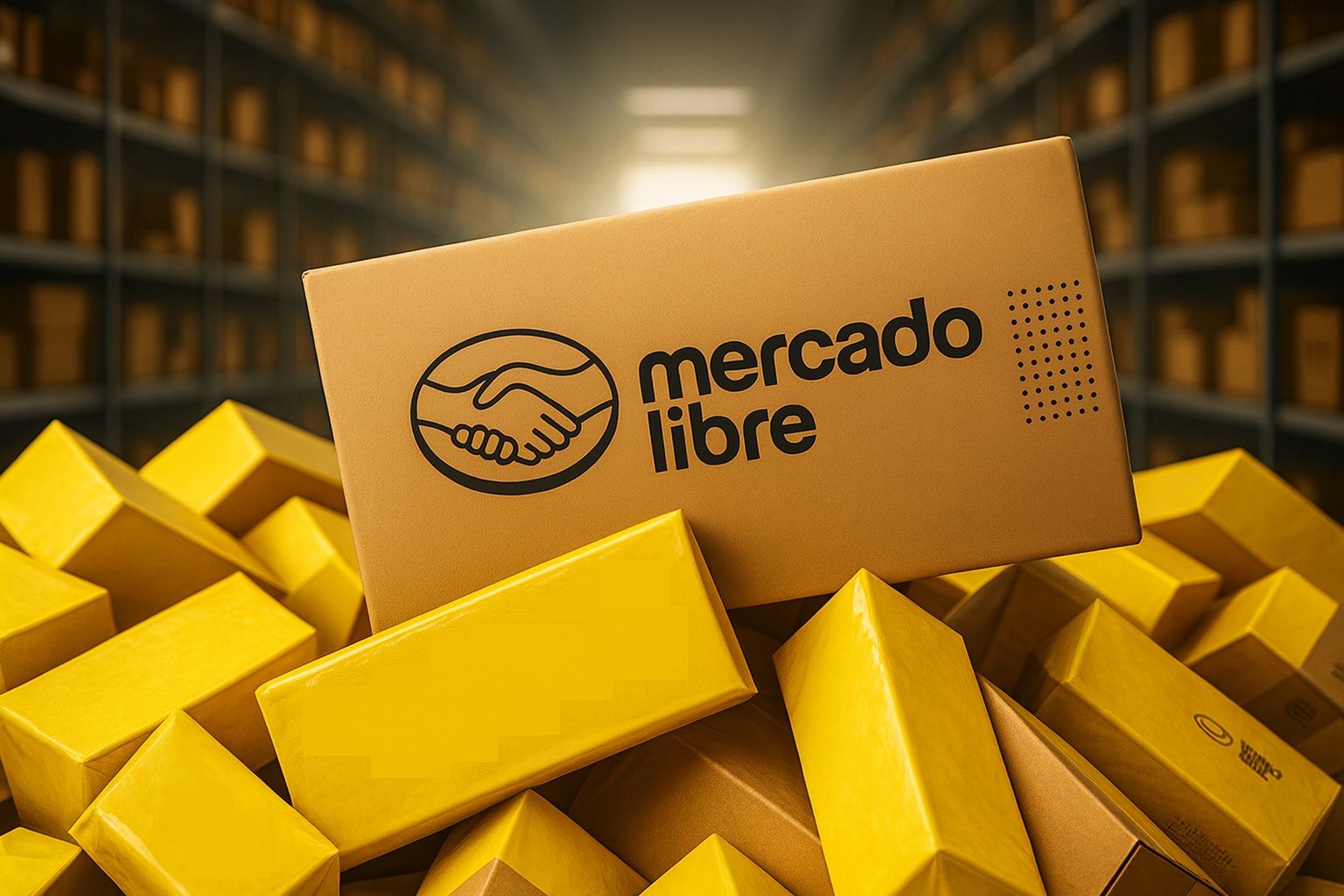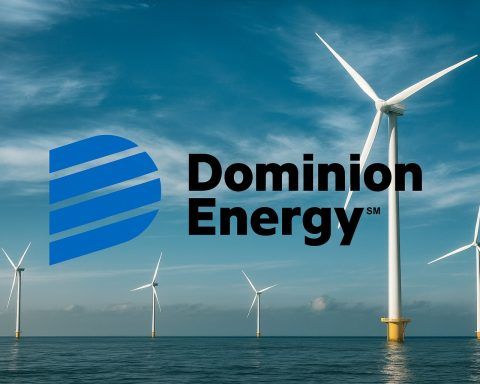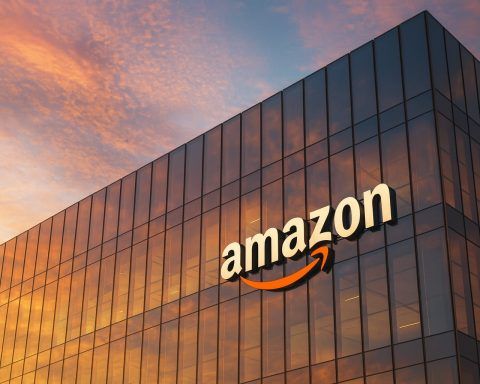- MELI stock steadies around $2,160 as of Oct. 27 after a volatile October dip [1] [2], still up about 20% year-to-date [3].
- New Brazil partnership: MercadoLibre will start selling Casas Bahia’s products in a tie-up aimed at boosting its market share in electronics and appliances [4], a “win-win” deal according to analysts [5].
- Growth vs. competition: The Latin American e-commerce leader is expanding into pharmaceuticals and B2B wholesale sales, even as Amazon, Shopee and others intensify a free-shipping price war in Brazil [6] [7].
- Analysts bullish overall: Wall Street maintains largely positive views on MercadoLibre. Wedbush just reaffirmed an “Outperform” (buy) rating ahead of earnings, with a $2,700 price target [8], and the consensus 12-month target hovers near $2,800 [9].
- Eyes on earnings: MercadoLibre reports Q3 results on Oct. 29. Forecasts call for about $9.5 in quarterly earnings per share [10], and investors will watch if heavy investments in growth start paying off or further squeeze profit margins.
Stock Price Volatility and Current Levels
MercadoLibre, Inc. (NASDAQ: MELI) – often dubbed the “Amazon of Latin America” – has seen its stock whipsaw in recent weeks amid broader market jitters. The share price plunged over 5% in one session on Oct. 15, tumbling to around $2,048 after nearing $2,500 in late September [11]. That pullback put the stock roughly 10–15% below its 52-week high of ~$2,645 [12]. As of Monday, Oct. 27, MercadoLibre’s stock has stabilized near $2,160 per share [13] – modestly above the mid-October lows. Even after the October drop, MELI remains up approximately 20% for the year to date [14], reflecting strong gains from earlier in 2025. (For context, the company’s market capitalization at this price is about $110 billion, making MercadoLibre the most valuable firm in Latin America [15].)
Analysts say the recent volatility was driven less by any single company event and more by global factors – from rising interest rates to economic uncertainty in Latin America. When MercadoLibre did announce a major initiative in early October (entering online pharmaceutical sales), the stock reaction was fairly muted [16]. Instead, fears of macroeconomic headwinds (high inflation, weak local currencies) and intense competition have weighed on sentiment [17]. Notably, MercadoLibre’s home base of operations – Latin America – has seen slower growth and currency instability this year, which can erode the dollar value of its sales. As a result, some investors grew cautious, prompting the early-October selloff. But longer-term holders point out that MercadoLibre has weathered past volatility. In fact, despite recent swings, the stock is still up over 4,000% since its 2007 IPO (a 78-fold increase) [18], thanks to the company’s sustained growth trajectory.
New Moves in Brazil Boost Growth Plans
MercadoLibre is aggressively expanding its business in its biggest market, Brazil, which accounts for roughly half of the company’s revenue [19]. In late October, the e-commerce giant struck a notable partnership with Brazilian retail chain Casas Bahia. Starting in November, MercadoLibre’s online marketplace will begin selling products from Casas Bahia – a 70-year-old retailer known for appliances, electronics and furniture [20] [21]. The alliance is designed to benefit both sides: MercadoLibre gains inventory in categories (like large appliances) where it historically lagged, while Casas Bahia gets access to MercadoLibre’s huge online customer base. “I see a huge synergy in the move,” said Fernando Yunes, MercadoLibre’s e-commerce head for Brazil, noting Casas Bahia’s strength in home appliances and electronics [22]. Santander bank analysts agreed, calling it a “win-win situation, given the complementary value proposition of each company” [23]. Investors reacted positively – MercadoLibre’s U.S.-listed shares rose about 0.6% after the deal was announced [24], and Casas Bahia’s stock in São Paulo jumped as much as 17% that day before paring gains.
This partnership comes on the heels of another bold move: earlier in October, MercadoLibre entered Brazil’s online medicine market. The company acquired a small physical drugstore in Brazil – a necessary step to meet local regulations – to enable pharmaceutical sales on its platform [25]. “The pharmaceutical sector is the only one in Brazil that we do not operate in. It’s a sector where we see potential for improvement in access,” explained Yunes at the time [26]. Rather than run its own pharmacy chain, MercadoLibre plans to act as a marketplace for third-party drugstores to sell medicines online [27]. Brazil was the last major market where MercadoLibre hadn’t offered online pharmacy sales (it already sells medicines in Mexico, Argentina, Chile and Colombia) [28]. By opening this channel, the company is tapping into a multi-billion-dollar health retail segment and hopes to replicate the success it has had integrating other products and services into its ecosystem.
MercadoLibre has also launched a new B2B (business-to-business) e-commerce platform across Brazil, Argentina, Mexico and Chile [29]. This wholesale marketplace, rolled out after a year-long pilot, connects large buyers and suppliers via MercadoLibre’s system. The B2B initiative targets corporate procurement, a market the company notes is “characterized by higher average tickets, recurring purchases, larger orders and lower return rates” than consumer retail [30] [31]. In a pilot phase, over 4 million users were enabled for wholesale purchasing [32] – highlighting the scale of demand. By diving into B2B and pharmaceuticals, MercadoLibre is extending its reach beyond traditional consumer shopping, aiming to capture new revenue streams.
All of these expansions require heavy investment. MercadoLibre is plowing significant funds into logistics, technology, and new services this year – roughly $13 billion in capital expenditures planned for 2025 (about a 38% increase from 2024) [33]. The spending includes building warehouses, beefing up shipping capacity, and hiring tens of thousands of employees (a ~30% jump in headcount, with about half of new investment focused in Brazil) [34]. The goal is to improve delivery speeds, enlarge its product catalog (including bulky items like fridges and TVs), and fortify its ecosystem against global rivals. In its second-biggest market Mexico, for example, MercadoLibre separately announced a $3.4 billion investment this year to expand its fintech and logistics operations [35]. By reinvesting aggressively into growth, MercadoLibre hopes to maintain its competitive edge – even if these moves pressure short-term profits.
Competition and Market Context
As Latin America’s e-commerce pioneer, MercadoLibre enjoys a dominant position in online shopping and digital payments across the region. The company operates online marketplaces in multiple countries and runs a booming financial technology arm (MercadoPago) that offers payments, digital wallets, lending and more [36]. This dual model – e-commerce plus fintech – has earned MercadoLibre comparisons to Amazon, eBay, and PayPal combined. It’s often referred to as the “Amazon of LatAm,” though in truth MercadoLibre has built a unique all-in-one ecosystem tailored to its markets [37].
However, success is attracting competition. In e-commerce, Amazon itself is expanding aggressively in Brazil and Mexico, while Singapore-based Shopee (owned by Sea Limited) and local players like Magazine Luiza are vying for market share [38] [39]. These rivals have triggered a bit of a price-and-promo war: companies are offering free shipping deals and heavy discounts to lure online shoppers. MercadoLibre has matched many of these promotions, which has boosted its sales but also raised costs. JPMorgan analysts warn that this intensifying fight in Brazil means MercadoLibre may have to spend more to grow, writing that “growth should come at a higher cost to MELI in the coming years” [40]. In fact, competition is one reason MercadoLibre’s profit margins have been under pressure recently – the company is subsidizing shipping and investing in infrastructure to stay ahead.
Competition isn’t only in retail. In fintech, MercadoLibre’s MercadoPago faces off against fast-growing digital banks and payment startups. Brazil’s Nubank and Argentina’s Ualá, for example, are attracting millions of users, pushing MercadoLibre to continuously innovate its financial services [41]. Still, MercadoLibre’s scale gives it an edge: its shopping platform provides a built-in user base for MercadoPago. Many buyers and sellers start on MercadoLibre’s marketplace and then adopt its payments, wallet, or credit offerings out of convenience. This integrated model creates a network effect that newcomers struggle to match.
MercadoLibre’s management remains confident in the company’s competitive moat. CEO Marcos Galperín has often highlighted the virtuous cycle between e-commerce and fintech on the platform. When more customers use MercadoLibre’s financing or digital wallet, it tends to drive more shopping, and vice versa. “When you have more financing, e-commerce grows. And vice versa,” Galperín explained, describing how lending and payments boost user spending [42]. His vision is to leverage MercadoLibre’s troves of data and AI to “give each user a private banker of their own” through the MercadoPago app [43] – in other words, provide personalized financial services alongside the shopping experience. This strategy not only generates additional revenue (through interest on loans, transaction fees, etc.) but also increases customer loyalty to MercadoLibre’s ecosystem.
Crucially, the Latin American market itself still offers plenty of growth potential. E-commerce and digital payments are less mature in LatAm than in the U.S. or Europe. MercadoLibre’s executives point out that roughly a quarter of people in the region still lack bank accounts or rely mostly on cash [44]. As more of these consumers come online and seek banking alternatives, companies like MercadoLibre are well positioned to capture that demand. The company’s recent moves (like the push into pharmaceuticals and B2B sales) also target sectors that were largely untapped online. In short, while competition is fierce, the overall pie of online retail and fintech in Latin America is growing rapidly – and MercadoLibre aims to maintain a leading share of it.
Financial Performance and Upcoming Earnings
MercadoLibre’s financial growth has been impressive, although heavy investment and competitive pressures have made profits a bit lumpy. In the most recent reported quarter (Q2 2025), the company posted revenue of $6.8 billion, up 34% year-over-year, slightly above analysts’ forecasts [45]. This solid top-line growth was fueled by the company’s aggressive promotion strategies – for instance, offering free shipping in Brazil boosted sales volumes significantly [46]. However, those efforts came at a cost: MercadoLibre’s net income was $523 million in Q2, which missed consensus estimates (analysts expected around $596 million) [47]. The profit shortfall was largely due to slimmer margins, as the company spent heavily on shipping subsidies, marketing, and scaling its operations.
MercadoLibre’s Chief Financial Officer, Martín de los Santos, has signaled that management isn’t alarmed by the near-term hit to earnings. These costs are viewed as strategic investments to cement the company’s market leadership. “We don’t want to miss the growth opportunities ahead of us… we are very optimistic about the long-term trajectory of our profitability,” de los Santos said [48], suggesting that once MercadoLibre attains greater scale and fends off competitors, profits will ramp up again. Indeed, MercadoLibre has a track record of balancing growth and profitability; in late 2024 it surprised investors with a big earnings beat [49] [50], proving it can deliver strong margins in favorable conditions. The company generates healthy free cash flow and has kept a reasonably strong balance sheet (debt levels are moderate), giving it flexibility to invest in growth.
All eyes are now on the upcoming Q3 2025 earnings report, scheduled for October 29. Market watchers are eager to see if MercadoLibre managed to improve its margins or if the trend of “growth at any cost” continued. According to a recent update from Wedbush Securities, the firm trimmed its Q3 earnings forecast for MercadoLibre to $9.56 in earnings per share (EPS), down from a prior $10.48, reflecting those margin pressures [51]. (EPS is a company’s profit divided by its number of shares, a common indicator of profitability.) Despite the slight downgrade in forecast, Wedbush reiterated an “Outperform” rating (meaning they expect the stock to outperform the market) and maintained a $2,700 price target [52]. The fact that Wedbush still has confidence in MercadoLibre’s future even after tempering short-term expectations speaks to the company’s appealing fundamentals.
Wall Street analysts broadly remain upbeat about MercadoLibre’s trajectory. Citigroup, for example, also adjusted its models earlier in the month – cutting its price target from $2,850 to $2,700 in early October – but kept a “Buy” rating on the stock [53]. Many other brokerage firms covering MELI are optimistic. According to data compiled by MarketBeat, the stock currently has 1 Strong Buy, 14 Buy, and 2 Hold ratings, making the consensus recommendation “Moderate Buy.” The average 12-month price target across analysts is about $2,800 per share [54]. That implies roughly 30% upside from recent prices – a reflection that experts see significant room for the stock to appreciate. Some are even more bullish: one outlier forecast from Scotiabank in July set a target of $3,500 [55], which would suggest the stock could double if all goes extremely well. While that high-end prediction may be optimistic, it underscores the confidence in MercadoLibre’s long-term growth story.
Why are analysts so positive? A big reason is MercadoLibre’s commanding position in expanding markets. The company’s fintech division in particular has been a growth engine. By mid-2025, MercadoLibre’s total payment volume and fintech user base were soaring. MercadoPago had about 68 million active users, up ~30% year-on-year [56], and its credit portfolio (loans to consumers and merchants) reached ~$9.3 billion, nearly double the level a year prior [57]. Importantly, credit quality has held up – loan default rates are near historic lows [58] – even as lending expanded, which speaks to effective risk management through the platform’s data-driven lending model. This robust fintech performance complements the core e-commerce business, creating multiple revenue streams and cross-selling opportunities. As one analyst noted, MercadoLibre’s ecosystem “deepens customer lifetime value and delivers operating leverage,” meaning the more services users adopt, the more profitable each customer can become over time [59].
Outlook: Balancing Growth and Risks
Going forward, MercadoLibre’s challenge is to maintain its rapid growth and demonstrate improving profitability as investments pay off. The company’s current valuation is relatively high – the stock trades at roughly 50 times 2025 earnings by some estimates [60], a multiple that assumes strong future growth. For that valuation to be justified (or for the stock to climb further), MercadoLibre will need to continue delivering expansion in the ~30% range annually. The good news for investors is that many projections show exactly that: some Wall Street models forecast 30–40% yearly revenue growth for MercadoLibre over the next 2–3 years [61], fueled by e-commerce adoption and fintech penetration. If the company meets those aggressive targets, its current share price could prove to be a bargain in hindsight. In fact, multiple analysts see the stock rising toward $3,000 or more within the next year or two [62]. By some valuation analyses, MercadoLibre might even be 25% undervalued at present – one recent model pegs a fair value close to $2,894 per share [63] given the company’s growth prospects.
That said, there are real risks to monitor. Latin America’s macroeconomic climate remains a wildcard. High inflation and interest rates in countries like Argentina, Brazil, and Mexico could dampen consumer spending or increase MercadoLibre’s costs of doing business (for instance, if the company has to pay more to finance its operations or if customers pull back on discretionary purchases). Currency fluctuations are another concern – a weaker Brazilian real or Argentine peso reduces the dollar-denominated value of MercadoLibre’s local sales and earnings [64]. The company actually took an accounting hit last quarter due to Argentine currency devaluation [65]. Any further economic turbulence in the region (or political instability, with Brazil facing elections in 2026) might pressure the company’s performance in the short run [66] [67].
Competitive pressure is the other key challenge. The cost of staying on top in e-commerce and fintech – whether through promotions, faster shipping, or new features – will remain high. MercadoLibre’s recent strategic moves show it’s willing to spend aggressively to defend its lead. This could weigh on profit margins in the near term. Investors will be watching upcoming earnings reports not just for growth, but for signs that MercadoLibre can eventually turn scale into operating leverage – essentially, grow revenues faster than expenses. If the company can demonstrate that its massive investments (in logistics, new partnerships, etc.) are beginning to yield efficiencies or new profit streams, it will bolster the bull case.
So far, the long-term narrative for MercadoLibre appears intact. The company has consistently shown it can capitalize on Latin America’s digital shift, building a trusted brand in a region with relatively few alternatives of similar scope. Many analysts therefore view pullbacks in MercadoLibre’s stock as “buy-the-dip” opportunities [68] for those with patience. As one brokerage put it, MercadoLibre is facing some headwinds today, yet it remains a unique growth story riding the wave of e-commerce and fintech adoption in under-served markets [69]. With new initiatives like the Casas Bahia deal and pharma sales, MercadoLibre is extending its reach when others might be retrenching, which could strengthen its moat.
Bottom line: MercadoLibre enters the end of 2025 at an inflection point. The upcoming earnings release on Oct. 29 will shed light on how well the company is balancing its breakneck expansion with profitability. Strong results or upbeat guidance could re-energize the stock, while any disappointments might spark short-term turbulence. Over the long haul, however, the combination of an untapped customer base, diversified business lines, and a proven ability to execute has positioned MercadoLibre as a linchpin of Latin America’s digital economy. For now, investors and analysts seem willing to bet that this e-commerce and fintech powerhouse will justify the hype – and potentially reward those betting on a continued rise in MercadoLibre’s stock in 2025 and beyond.
Sources: Reuters; TechStock² (ts2.tech) analysis [70] [71] [72]; MarketBeat [73] [74]; Simply Wall St [75]; MercadoLibre investor reports.
References
1. ts2.tech, 2. www.marketbeat.com, 3. ts2.tech, 4. www.reuters.com, 5. www.reuters.com, 6. www.reuters.com, 7. ts2.tech, 8. www.marketbeat.com, 9. www.marketbeat.com, 10. www.marketbeat.com, 11. ts2.tech, 12. ts2.tech, 13. www.marketbeat.com, 14. ts2.tech, 15. ts2.tech, 16. ts2.tech, 17. ts2.tech, 18. ts2.tech, 19. ts2.tech, 20. www.reuters.com, 21. www.reuters.com, 22. www.reuters.com, 23. www.reuters.com, 24. www.reuters.com, 25. ts2.tech, 26. ts2.tech, 27. ts2.tech, 28. ts2.tech, 29. ts2.tech, 30. ts2.tech, 31. ts2.tech, 32. ts2.tech, 33. ts2.tech, 34. ts2.tech, 35. ts2.tech, 36. ts2.tech, 37. ts2.tech, 38. ts2.tech, 39. www.reuters.com, 40. ts2.tech, 41. ts2.tech, 42. ts2.tech, 43. ts2.tech, 44. ts2.tech, 45. ts2.tech, 46. ts2.tech, 47. ts2.tech, 48. ts2.tech, 49. ts2.tech, 50. ts2.tech, 51. www.marketbeat.com, 52. www.marketbeat.com, 53. www.marketbeat.com, 54. www.marketbeat.com, 55. www.marketbeat.com, 56. ts2.tech, 57. ts2.tech, 58. ts2.tech, 59. simplywall.st, 60. ts2.tech, 61. ts2.tech, 62. ts2.tech, 63. simplywall.st, 64. ts2.tech, 65. ts2.tech, 66. ts2.tech, 67. ts2.tech, 68. ts2.tech, 69. ts2.tech, 70. ts2.tech, 71. ts2.tech, 72. ts2.tech, 73. www.marketbeat.com, 74. www.marketbeat.com, 75. simplywall.st





